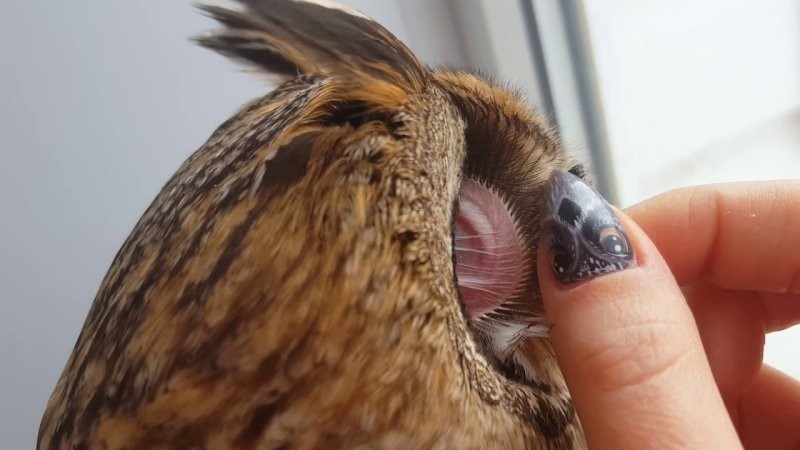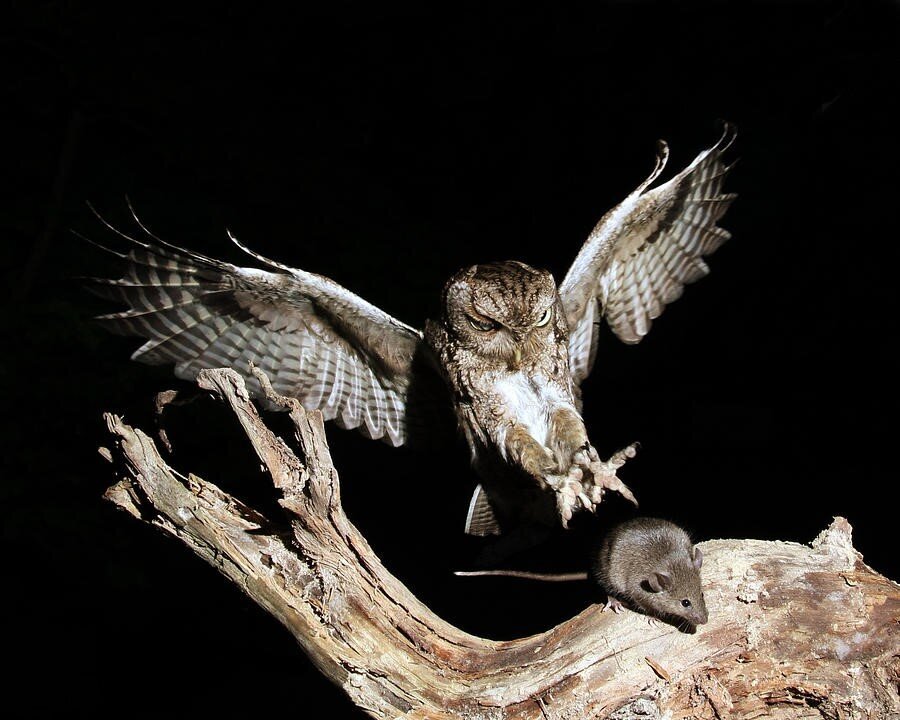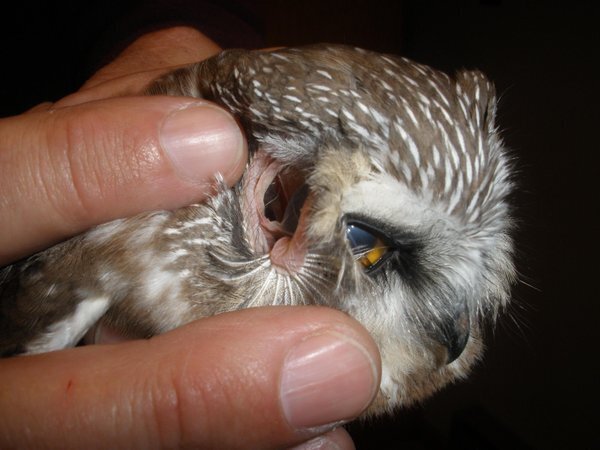This is what an owl's ear looks like (4 photos + 1 video)
If you look there, you can see the eye of a bird. Why do owls need such a strange hearing organ and how does it work? 
Have you ever seen what an owl's ear looks like? And this is what it looks like:
Owls are nocturnal predators, but if they relied primarily on sight to hunt, they would often go hungry on moonless or cloudy nights. In pitch darkness, not a single sighted predator, including owls, is able to discern even the silhouette of prey.
It has been experimentally confirmed that an owl will not be able to catch a mouse running in a dark room on a sound-absorbing surface, no matter how clearly it can see in the dark. But finding food based solely on hearing is quite possible for an owl.

Thanks to its acute hearing, the owl accurately detects the movements of mice and voles under the thick snow and easily catches them. The owl's hearing organ is unique in the world of birds. With the help of skin folds near the auditory openings, owls form something like auricles. The growing feathers form a megaphone in a special way, further amplifying the incoming sounds.
The feathers around the “facial disk” of a bird of prey are responsible for amplifying sounds. Thanks to their special location, the owl can better hear sounds coming from behind. But this does not create inconvenience for her when hunting, since the owl is able to turn its head almost 180 degrees.

Another feature of the “ears” of owls is their asymmetry. The axes of the auditory openings can be located at different angles and diverge in different directions. This allows you to more accurately determine the location of the sound source.
In addition to the external structure, the owl’s hearing acuity is ensured by a large eardrum with an area of about 50 square millimeters - twice as large as that of a chicken. It has a tent-shaped convexity, making it even more sensitive to sounds. And that's not all. Even the auditory nerves of owls are much more complex and better developed compared to other birds. Together, all these features make owls ideal night hunters.






















